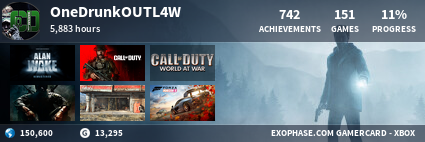This year, 252 pitchers have started a game in the major leagues. Exactly 21 of them have maintained an average fastball velocity of 94 mph or greater in their starts. The list reads like a who***8217;s who of current and potential aces: Stephen Strasburg, Matt Harvey, Gerrit Cole, Kevin Gausman, Jarred Cosart, Andrew Cashner, Zack Wheeler, Alfredo Figaro***8230;okay, not all*21 come with heaps of accolades. Still, velocity is undoubtedly a prized commodity in starting pitchers, and anybody who threatens to someday join the 94+ starter club merits our attention.
I recently saw two pitchers who may someday join that club: Texas prospect Luke Jackson and Washington prospect A.J. Cole. Both righthanded pitchers are having excellent campaigns in High-A and have big velocity behind those numbers. Let***8217;s take a closer look at what sort of potential these two flamethrowers have.
Luke Jackson
Luke Jackson was drafted by the Rangers with the 45th overall selection in 2010 out of a Florida high school. He***8217;s progressed somewhat slowly through the system, but that***8217;s more due to their cautious approach with him and a backlog of arms in the organization than any sort of struggles on Jackson***8217;s part; he***8217;s struck out over a batter per inning at each stop he***8217;s made. He***8217;s nearing his 22nd birthday and has thrown 148 innings in High-A across the past two seasons with a 3.34 ERA, 3.27 FIP, and 160/73 K/BB ratio***8211;he***8217;s ready for the upper minors whenever he gets the call.
Jackson***8217;s bread and butter is a fastball that sits at 92-96 mph and touches 97. He holds that velocity all the way through games***8211;in fact, in the start I saw, he was more consistently at 95-97 mph in the final inning he worked. Here***8217;s a fairly extensive reel of his fastballs from that start:
You can see the problems Jackson***8217;s heater caused for the Winston-Salem batters in the outing. Eight of the 45 heaters in the video drew swings and misses, and several others prompted very weak swings. In particular, he gave lefthanded batters a lot of trouble with the pitch***8211;Joey DeMichele accounted for half of the eight whiffs on his own, and Adam Heisler and Micah Johnson were clearly flustered by how quickly the pitch got in on them, flying open and taking defensive swings. This is no coincidence: Jackson has a 31.3% K% against lefties this year and just 23.5% against righties. He also walks more southpaws (14.1% to 10.1%), but the increased strikeout rate means that his K/BB ratio against lefties is nearly as good as it is against his fellow righthanders.
Jackson has a broad arsenal to complement the fastball, throwing a curveball, slider, and changeup that all show promise. The curveball comes in at 75-80 mph, the slider 81-84, and the changeup 81-85. Here***8217;s a look at the breaking pitches:
He gets three whiffs on another sixteen offerings here, again showing the ability to work both sides of the plate to both lefties and righties with the pitch. Like a lot of high-overhand pitchers, he doesn***8217;t get a whole lot of horizontal sweep on his breaking stuff (or any of his pitches, really), but both breaking balls arrive with good velocity and solid vertical drop.
Here***8217;s a look at his changeups from the outing:
Again, Jackson shows the ability to throw the pitch effectively to hitters of both sides***8211;the changeup isn***8217;t just something he breaks out to lefties. At 81-85, it comes in about 10-11 mph slower than his fastball, on average, and it features solid sink and a bit of fade. He sells it well with his high overhand slot, which gives the pitch good plane, making it seem as if it***8217;s tumbling out of the sky.
You can see the effect Jackson can have on a hitter when he***8217;s on his game by observing Adam Heisler***8216;s cuts in the videos. Heisler***8217;s a pretty good High-A hitter who manages at-bats well***8211;he***8217;s hitting .290/.391/.419 with a solid 42/28 K/BB***8211;but you can see him take three very defensive, late cuts on fastballs at 1:48-2:09 in the fastballs video, which then set him up for being way out in front of two changeups in his next at-bat, which you can see at 1:21-1:34 of the changeups video. Jackson isn***8217;t just a flamethrower: he***8217;s a flamethrower who can really upset a hitter***8217;s timing. His pitches jump on hitters quickly, and with four legitimately solid offerings that he***8217;ll use to both lefties and righties and to both sides of the plate, he projects to have a complete arsenal that should allow him to remain a starting pitcher. The fact that he holds his velocity all the way through his outings assists this projection.
One obstacle that many bring up as problematic for Jackson***8217;s future as a starter is his walk rate. It sits at 12% this year, and has been between 11.2% and 13.4% at every stop of his career. He***8217;ll likely need to bring that down to the 8-9% range to be an effective starting pitcher.
I***8217;m optimistic that he can get to that range. Jackson***8217;s still just 21 years old, and control can certainly develop beyond that age. For the last two years, he***8217;s been able to maintain K/BB ratios better than 2/1 in spite of his walks, and it may be that he won***8217;t start throwing more strikes until he really*needs*to***8211;when upper-minors batters force him to be honest and pitch in the zone more.
Jackson***8217;s mechanics aren***8217;t exactly the textbook definition of a good delivery, but they ultimately don***8217;t strike me as all that problematic. The major issue with his motion is that he has a big shoulder tilt on the back side, which means he has to go from this position***8230;

***8230;to his release point:

It***8217;s a tall order to get from the first position to the second position reliably 100 times in a row over the course of a game, and Jackson will occasionally lose his release point. Still, when you actually see his motion put together, you can see he resolves the shoulder tilt fairly quickly and fairly consistently, keeping the delivery reasonably compact and low-effort. I don***8217;t see Jackson ever becoming a real ***8220;strike-thrower***8221; per se, but it***8217;s not hard to envision him as a guy with eight strikeouts and three walks per nine innings in the majors in his mid-twenties.
Such ratios would peg Jackson as a solid #3 starter in the majors. Unlike most high-overhand pitchers, he***8217;s not an extreme flyball guy, with a near-average 43.1% groundball rate this year. Maintaining that on his ascent will be key if he***8217;s not traded, because The Ballpark In Arlington is not kind to pitchers who allow a lot of flyballs to lefthanded batters. Jackson***8217;s effectiveness to lefties should further help him neutralize the ballpark***8217;s generous hitting environment.
A.J. Cole
A.J. Cole, like Jackson, has had a fairly slow ascent through the minors but is still just 21***8211;he***8217;s actually over four months younger than Jackson. Over 25 starts in High-A the past two seasons, Cole***8217;s had some exceedingly poor luck, with an unsightly 5.43 ERA (7.82 in eight starts last year, 4.43 in 17 this year) hiding a solid 3.90 FIP (4.99 last season, 3.45 this year). Like Jackson, he***8217;s always been able to strike hitters out (341 in 315 career innings; 99 in 91 this year); unlike Jackson, he pairs those strikeouts with few walks (76 career; 22 this year; K/BB ratio of 4.5 for both 2013 and career).
I saw Cole breeze through an abbreviated three-inning start last week (he was pulled early in advance of the Futures Game, where he earned the save). He showed an electric fastball that came in at 94-97 mph; unlike Jackson, Cole also has a two-seamer with bigtime life. Here are all his fastballs from the outing:
Like Jackson, Cole shows the ability to generate swings and misses with the fastball on occasion (three in 26 pitches in the above video), and also induce weak opposite-field contact on late offerings (even Grant Buckner***8216;s double there is really just a slap down the first-base line). He also has some truly phenomenal life on the ball at times. His ten-pitch Futures Game appearance was tracked by Pitch F/X, and according to Brooks Baseball, he threw two two-seam fastballs in the game which boasted about three inches of horizontal run and three inches of sink relative to the average heater***8230;and came in upward of 96 mph. Cole***8217;s four-seamer also has around three more inches of sink than an average fastball, though it doesn***8217;t have much horizontal action.
It may then surprise you to learn that Cole has struggled to generate groundballs in his career. He***8217;s at just 34.5% this year, and has been between 34% and 35% in three of his last four stops. It does seem like he has the capability to improve in this area given the sink his fastball boasts.
Cole***8217;s secondary pitches are an upper-70s curveball and a low-80s changeup. The change, which features the same sort of big run and sink as his two-seamer, is probably ahead of the slurvy breaker right now, but both are already playable and have at least average potential. Here***8217;s a quick look at them:
Mechanically, there***8217;s not too much to worry about, here: Cole***8217;s motion has a bit of length in the back, but it***8217;s generally quite smooth and easy, as the ball really jumps out of his hand with a lot of life. It***8217;s easy to see how he***8217;s been able to avoid walks so well, and he may end up with plus command by the time he reaches the majors.
Cole will need to improve his offspeed pitches if he***8217;s going to retain big strikeout ability at the upper levels, and he needs to get groundballs a bit more frequently***8211;he***8217;s allowed 18 homers in 129 1/3 High-A innings in the last two seasons. Still, he***8217;s just 21 with projection remaining, and he already has a legitimate mid-90s moving fastball that he can throw for quality strikes to all four quadrants of the zone; that***8217;s not a bad place to be at this point in his development.
Given their distance from the majors and some roughness around the edges, there remains a fairly wide variety of potential outcomes for both Cole and Jackson. It***8217;s not hard to see either as flamethrowing late-game relievers, but they also have the potential to pitch in the front to middle of a big league rotation if they can turn their greatest weaknesses into areas of competence. There***8217;s still plenty of time for the rough edges to round into form; like any minor leaguers, they***8217;ll shed a lot more light on their future when they encounter the test of Double-A, a test that they***8217;re essentially primed to take after spending parts of two years at the High-A level. Cole and Jackson should both rate in the 50-100 range on most prospect lists, and combine fairly high ceilings with reasonably high floors***8211;they*have*made it through the low minors, after all, which can***8217;t be said for all the draftees and short-season teenagers that get bandied about this time of year. Both are solid investments in dynasty leagues where more than just the top 50 prospects come into play.


More...
I recently saw two pitchers who may someday join that club: Texas prospect Luke Jackson and Washington prospect A.J. Cole. Both righthanded pitchers are having excellent campaigns in High-A and have big velocity behind those numbers. Let***8217;s take a closer look at what sort of potential these two flamethrowers have.
Luke Jackson
Luke Jackson was drafted by the Rangers with the 45th overall selection in 2010 out of a Florida high school. He***8217;s progressed somewhat slowly through the system, but that***8217;s more due to their cautious approach with him and a backlog of arms in the organization than any sort of struggles on Jackson***8217;s part; he***8217;s struck out over a batter per inning at each stop he***8217;s made. He***8217;s nearing his 22nd birthday and has thrown 148 innings in High-A across the past two seasons with a 3.34 ERA, 3.27 FIP, and 160/73 K/BB ratio***8211;he***8217;s ready for the upper minors whenever he gets the call.
Jackson***8217;s bread and butter is a fastball that sits at 92-96 mph and touches 97. He holds that velocity all the way through games***8211;in fact, in the start I saw, he was more consistently at 95-97 mph in the final inning he worked. Here***8217;s a fairly extensive reel of his fastballs from that start:
You can see the problems Jackson***8217;s heater caused for the Winston-Salem batters in the outing. Eight of the 45 heaters in the video drew swings and misses, and several others prompted very weak swings. In particular, he gave lefthanded batters a lot of trouble with the pitch***8211;Joey DeMichele accounted for half of the eight whiffs on his own, and Adam Heisler and Micah Johnson were clearly flustered by how quickly the pitch got in on them, flying open and taking defensive swings. This is no coincidence: Jackson has a 31.3% K% against lefties this year and just 23.5% against righties. He also walks more southpaws (14.1% to 10.1%), but the increased strikeout rate means that his K/BB ratio against lefties is nearly as good as it is against his fellow righthanders.
Jackson has a broad arsenal to complement the fastball, throwing a curveball, slider, and changeup that all show promise. The curveball comes in at 75-80 mph, the slider 81-84, and the changeup 81-85. Here***8217;s a look at the breaking pitches:
He gets three whiffs on another sixteen offerings here, again showing the ability to work both sides of the plate to both lefties and righties with the pitch. Like a lot of high-overhand pitchers, he doesn***8217;t get a whole lot of horizontal sweep on his breaking stuff (or any of his pitches, really), but both breaking balls arrive with good velocity and solid vertical drop.
Here***8217;s a look at his changeups from the outing:
Again, Jackson shows the ability to throw the pitch effectively to hitters of both sides***8211;the changeup isn***8217;t just something he breaks out to lefties. At 81-85, it comes in about 10-11 mph slower than his fastball, on average, and it features solid sink and a bit of fade. He sells it well with his high overhand slot, which gives the pitch good plane, making it seem as if it***8217;s tumbling out of the sky.
You can see the effect Jackson can have on a hitter when he***8217;s on his game by observing Adam Heisler***8216;s cuts in the videos. Heisler***8217;s a pretty good High-A hitter who manages at-bats well***8211;he***8217;s hitting .290/.391/.419 with a solid 42/28 K/BB***8211;but you can see him take three very defensive, late cuts on fastballs at 1:48-2:09 in the fastballs video, which then set him up for being way out in front of two changeups in his next at-bat, which you can see at 1:21-1:34 of the changeups video. Jackson isn***8217;t just a flamethrower: he***8217;s a flamethrower who can really upset a hitter***8217;s timing. His pitches jump on hitters quickly, and with four legitimately solid offerings that he***8217;ll use to both lefties and righties and to both sides of the plate, he projects to have a complete arsenal that should allow him to remain a starting pitcher. The fact that he holds his velocity all the way through his outings assists this projection.
One obstacle that many bring up as problematic for Jackson***8217;s future as a starter is his walk rate. It sits at 12% this year, and has been between 11.2% and 13.4% at every stop of his career. He***8217;ll likely need to bring that down to the 8-9% range to be an effective starting pitcher.
I***8217;m optimistic that he can get to that range. Jackson***8217;s still just 21 years old, and control can certainly develop beyond that age. For the last two years, he***8217;s been able to maintain K/BB ratios better than 2/1 in spite of his walks, and it may be that he won***8217;t start throwing more strikes until he really*needs*to***8211;when upper-minors batters force him to be honest and pitch in the zone more.
Jackson***8217;s mechanics aren***8217;t exactly the textbook definition of a good delivery, but they ultimately don***8217;t strike me as all that problematic. The major issue with his motion is that he has a big shoulder tilt on the back side, which means he has to go from this position***8230;

***8230;to his release point:

It***8217;s a tall order to get from the first position to the second position reliably 100 times in a row over the course of a game, and Jackson will occasionally lose his release point. Still, when you actually see his motion put together, you can see he resolves the shoulder tilt fairly quickly and fairly consistently, keeping the delivery reasonably compact and low-effort. I don***8217;t see Jackson ever becoming a real ***8220;strike-thrower***8221; per se, but it***8217;s not hard to envision him as a guy with eight strikeouts and three walks per nine innings in the majors in his mid-twenties.
Such ratios would peg Jackson as a solid #3 starter in the majors. Unlike most high-overhand pitchers, he***8217;s not an extreme flyball guy, with a near-average 43.1% groundball rate this year. Maintaining that on his ascent will be key if he***8217;s not traded, because The Ballpark In Arlington is not kind to pitchers who allow a lot of flyballs to lefthanded batters. Jackson***8217;s effectiveness to lefties should further help him neutralize the ballpark***8217;s generous hitting environment.
A.J. Cole
A.J. Cole, like Jackson, has had a fairly slow ascent through the minors but is still just 21***8211;he***8217;s actually over four months younger than Jackson. Over 25 starts in High-A the past two seasons, Cole***8217;s had some exceedingly poor luck, with an unsightly 5.43 ERA (7.82 in eight starts last year, 4.43 in 17 this year) hiding a solid 3.90 FIP (4.99 last season, 3.45 this year). Like Jackson, he***8217;s always been able to strike hitters out (341 in 315 career innings; 99 in 91 this year); unlike Jackson, he pairs those strikeouts with few walks (76 career; 22 this year; K/BB ratio of 4.5 for both 2013 and career).
I saw Cole breeze through an abbreviated three-inning start last week (he was pulled early in advance of the Futures Game, where he earned the save). He showed an electric fastball that came in at 94-97 mph; unlike Jackson, Cole also has a two-seamer with bigtime life. Here are all his fastballs from the outing:
Like Jackson, Cole shows the ability to generate swings and misses with the fastball on occasion (three in 26 pitches in the above video), and also induce weak opposite-field contact on late offerings (even Grant Buckner***8216;s double there is really just a slap down the first-base line). He also has some truly phenomenal life on the ball at times. His ten-pitch Futures Game appearance was tracked by Pitch F/X, and according to Brooks Baseball, he threw two two-seam fastballs in the game which boasted about three inches of horizontal run and three inches of sink relative to the average heater***8230;and came in upward of 96 mph. Cole***8217;s four-seamer also has around three more inches of sink than an average fastball, though it doesn***8217;t have much horizontal action.
It may then surprise you to learn that Cole has struggled to generate groundballs in his career. He***8217;s at just 34.5% this year, and has been between 34% and 35% in three of his last four stops. It does seem like he has the capability to improve in this area given the sink his fastball boasts.
Cole***8217;s secondary pitches are an upper-70s curveball and a low-80s changeup. The change, which features the same sort of big run and sink as his two-seamer, is probably ahead of the slurvy breaker right now, but both are already playable and have at least average potential. Here***8217;s a quick look at them:
Mechanically, there***8217;s not too much to worry about, here: Cole***8217;s motion has a bit of length in the back, but it***8217;s generally quite smooth and easy, as the ball really jumps out of his hand with a lot of life. It***8217;s easy to see how he***8217;s been able to avoid walks so well, and he may end up with plus command by the time he reaches the majors.
Cole will need to improve his offspeed pitches if he***8217;s going to retain big strikeout ability at the upper levels, and he needs to get groundballs a bit more frequently***8211;he***8217;s allowed 18 homers in 129 1/3 High-A innings in the last two seasons. Still, he***8217;s just 21 with projection remaining, and he already has a legitimate mid-90s moving fastball that he can throw for quality strikes to all four quadrants of the zone; that***8217;s not a bad place to be at this point in his development.
Given their distance from the majors and some roughness around the edges, there remains a fairly wide variety of potential outcomes for both Cole and Jackson. It***8217;s not hard to see either as flamethrowing late-game relievers, but they also have the potential to pitch in the front to middle of a big league rotation if they can turn their greatest weaknesses into areas of competence. There***8217;s still plenty of time for the rough edges to round into form; like any minor leaguers, they***8217;ll shed a lot more light on their future when they encounter the test of Double-A, a test that they***8217;re essentially primed to take after spending parts of two years at the High-A level. Cole and Jackson should both rate in the 50-100 range on most prospect lists, and combine fairly high ceilings with reasonably high floors***8211;they*have*made it through the low minors, after all, which can***8217;t be said for all the draftees and short-season teenagers that get bandied about this time of year. Both are solid investments in dynasty leagues where more than just the top 50 prospects come into play.
More...












